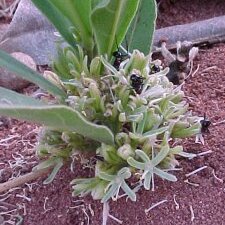Small trees or shrubs, sometimes scandent shrubs. Leaves simple, alternate; stipules small, deciduous. Inflorescences axillary corymbose cymes, sometimes glomerate capitula; peduncles sometimes adnate with petioles. Flowers small, bisexual, rarely unisexual, actinomorphic or slightly zygomorphic. Sepals 5, free or partly connate, imbricate. Petals 5, free and equal or connate, unequal, apex 2-lobed or subentire. Stamens 5, alternate with petals, free or connate; anthers 2-loculed, dehiscence longitudinal, thickened on back of connective. Disk lobed, with 5 glands or disk annular, margin undulate, glands opposite to petals, free. Ovary superior or inferior, 2-or 3-locular; ovules 2, inverted in each locule; styles ± connate or free. Drupe dry or slightly fleshy; exocarp thin, easily burst. Seeds lacking endosperm; cotyledons fleshy.
Trees, shrubs (often scrambling) or lianes, monoecious or dioecious. Leaves alternate, simple, stipulate. Flowers small, actinomorphic or slightly zygomorphic, bisexual. Sepals 5, free or basally connate, imbricate. Petals 5, mostly bilobed, free or fused into tube. Stamens 5, alternate with petals, free or episepalous; anthers 2-locular, dehiscing by longitudinal slits. Disc of 5 epipetalous lobes. Ovary superior or inferior, of 2 or 3, rarely 4, connate carpels; style mostly connate at base, 2-or 3-fid at apex; ovules 2 per locule, pendulous. Fruit a drupe, dry or fleshy. Seeds without endosperm; embryo straight.
Petals 5, equal (in actinomorphic flowers) or unequal (in zygomorphic flowers), often 2-dentate, 2-lobed or 2-fid at the apex, sometimes united with the stamens at the base
Ovary superior or semi-inferior, composed of 2–3 carpels, 2–3-locular, with 2 pendulous ovules in each loculus; style simple, 2–3-lobulate or 2–3-fid at the apex
Leaves alternate, subsessile or petiolate, simple, entire, often provided with glands at the base and below the apex; stipules caducous or persistent
Disk annular or often divided into 5 squamulous hypogynous glands, distinct or connate
Fruits drupaceous, with 3 (often reduced to 2 or 1) ± separate mericarps, 1–2-seeded
Flowers actinomorphic or zygomorphic, bisexual or rarely unisexual by abortion
Stamens (4) 5, all fertile or 2–3 fertile and 2 staminodes; anthers introrse
Inflorescence of cymes, fascicles or glomerules, often axillary
Seeds without endosperm; cotyledons containing starch
Shrublets or erect or scandent shrubs or rarely trees
Sepals 5, ± connate below

